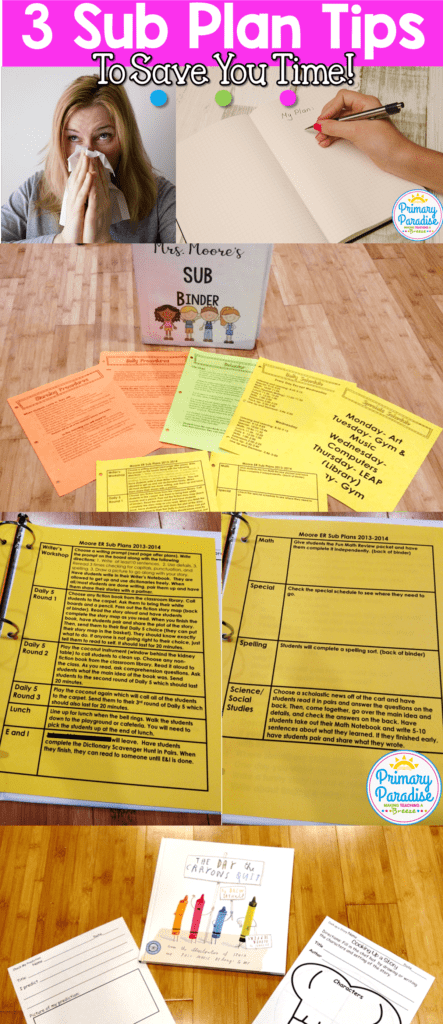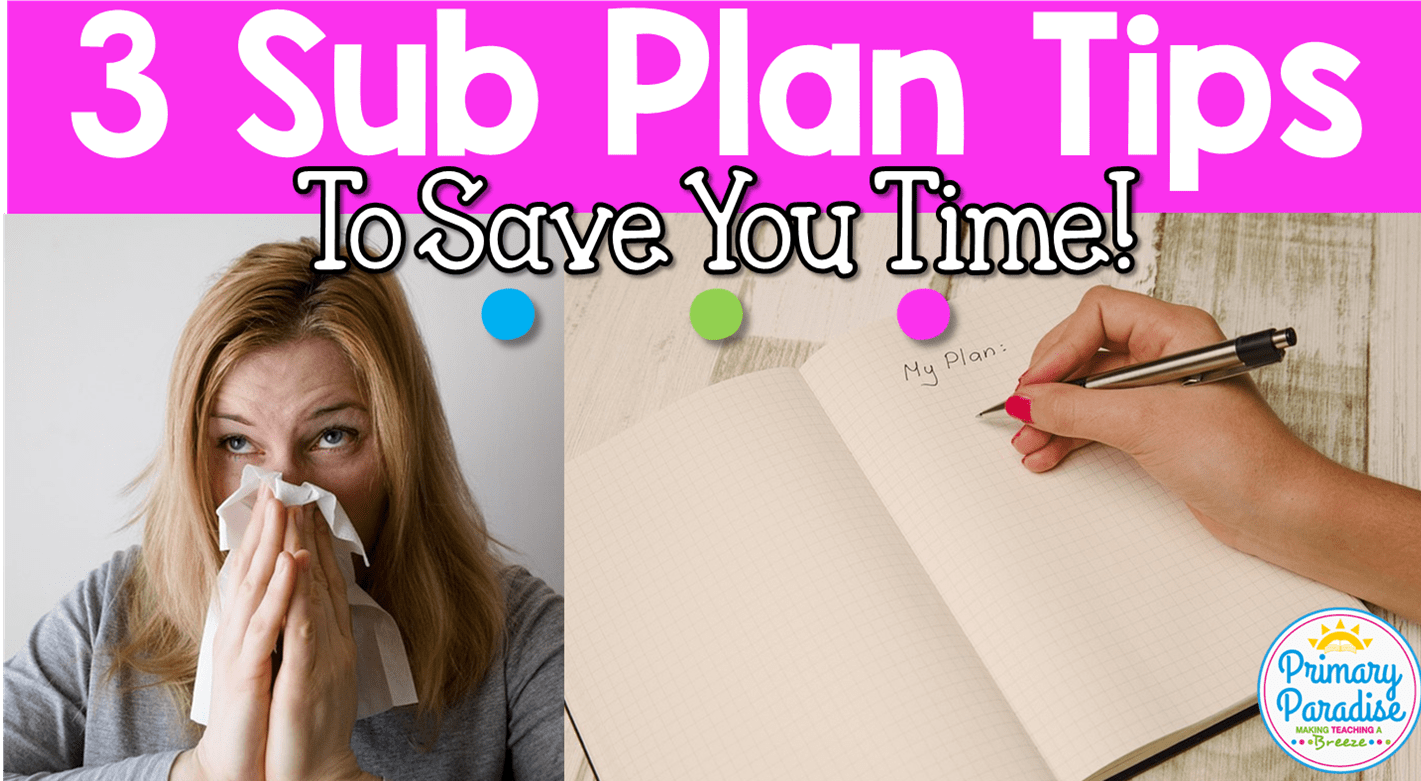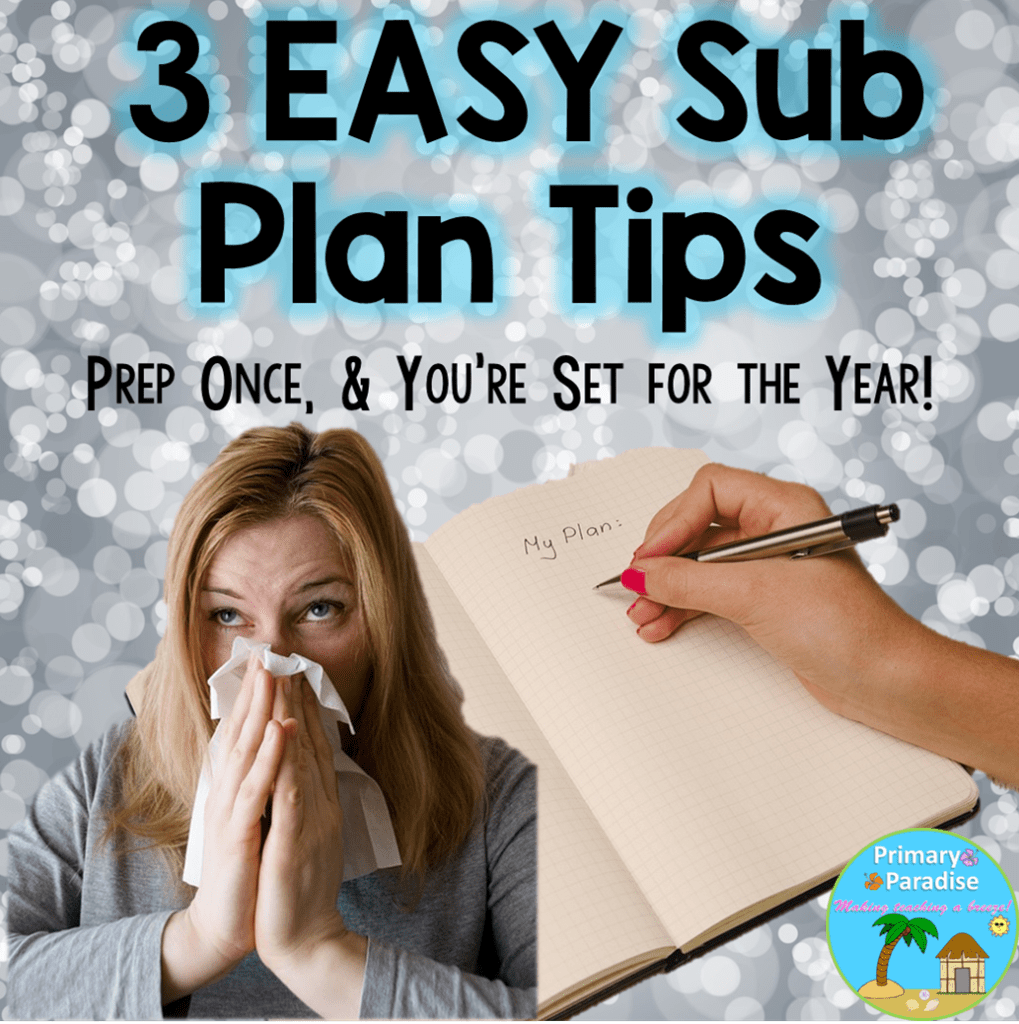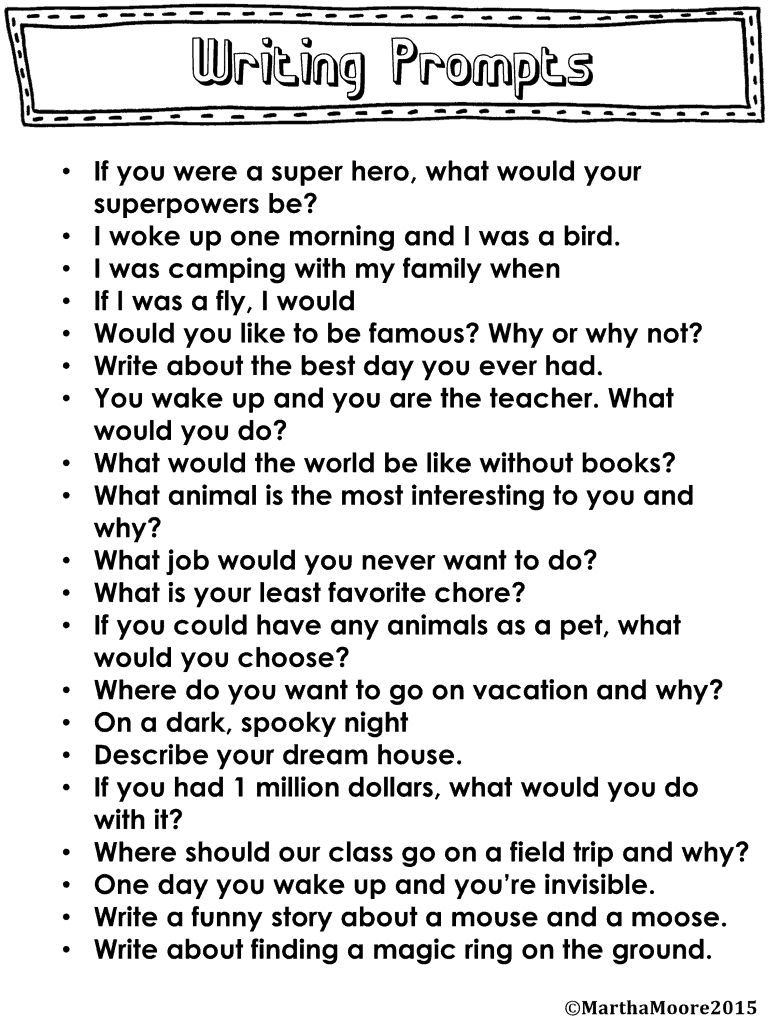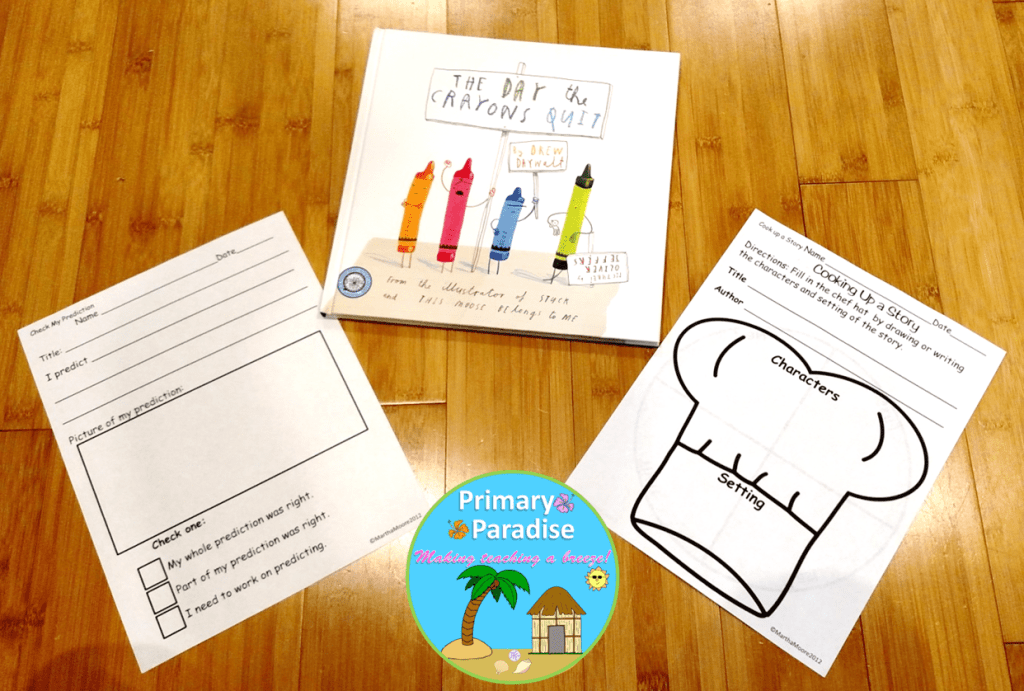Hi Friends! If you follow me on Facebook, you might have caught me sharing these tips live on Tuesday. Whether you missed it, or not, I wanted to take some time today to share my 3 tips that will hopefully make your sub planning much. much easier so, on those days you or your children are feeling under the weather, you’re able to stay home and rest instead of dragging yourself into school while sick. As well as teaching first and second grade, I’ve subbed in every grade from Pre-K to 8th grade, and that experience taught me a few things about how to make it an easy experience for your students, your sub, and yourself!
Watch my Facebook live on this topic here.
So, let’s dive right in!
#1. Create a sub binder with all important information in one place.
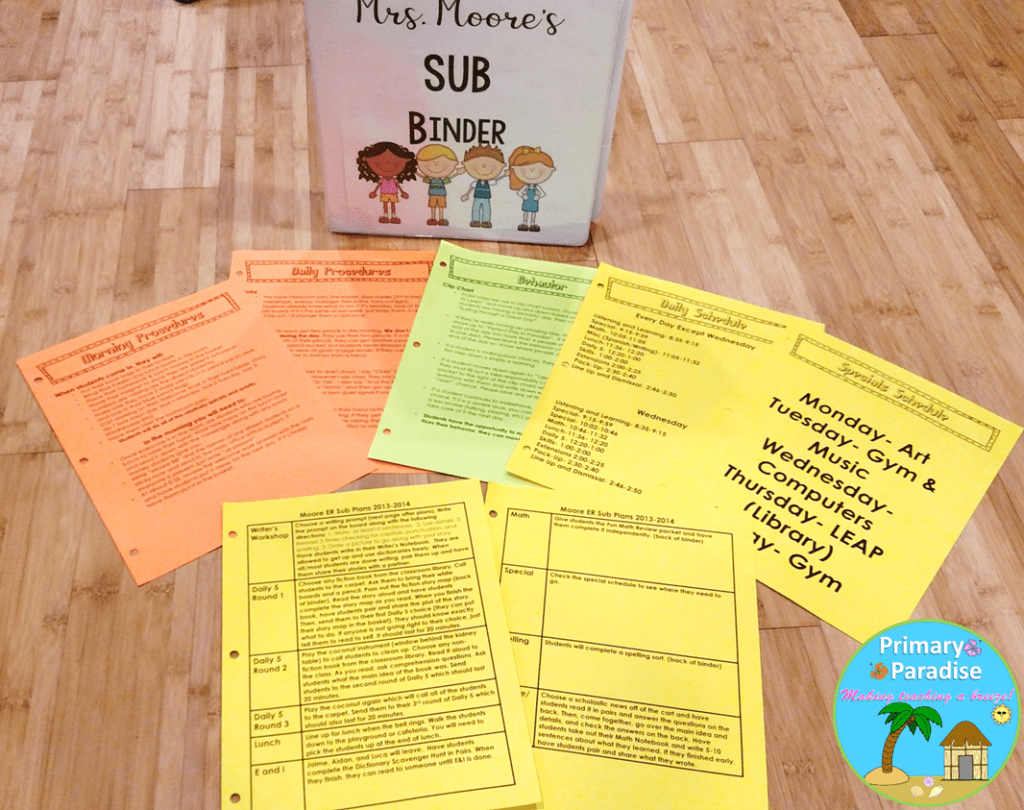
I kept my sub binder on the shelf behind my guided reading table (where I spent much of my time as I didn’t use a teacher desk) and my grade partners all knew where it was. That way, even on days I was expectantly out, it was easy to find.
Compiling a sub binder might sound like a lot of work, but it really doesn’t need to be. I only had about 7-8 pages in mine, and it took about an hour to put together.
Here’s what I included:
- Class list
- Morning procedures- broken down into what the kids should be doing and what the sub needed to do.
- Daily procedures- such as jobs, pencils, how to get the students quiet, and how students are expected to get the sub’s attention
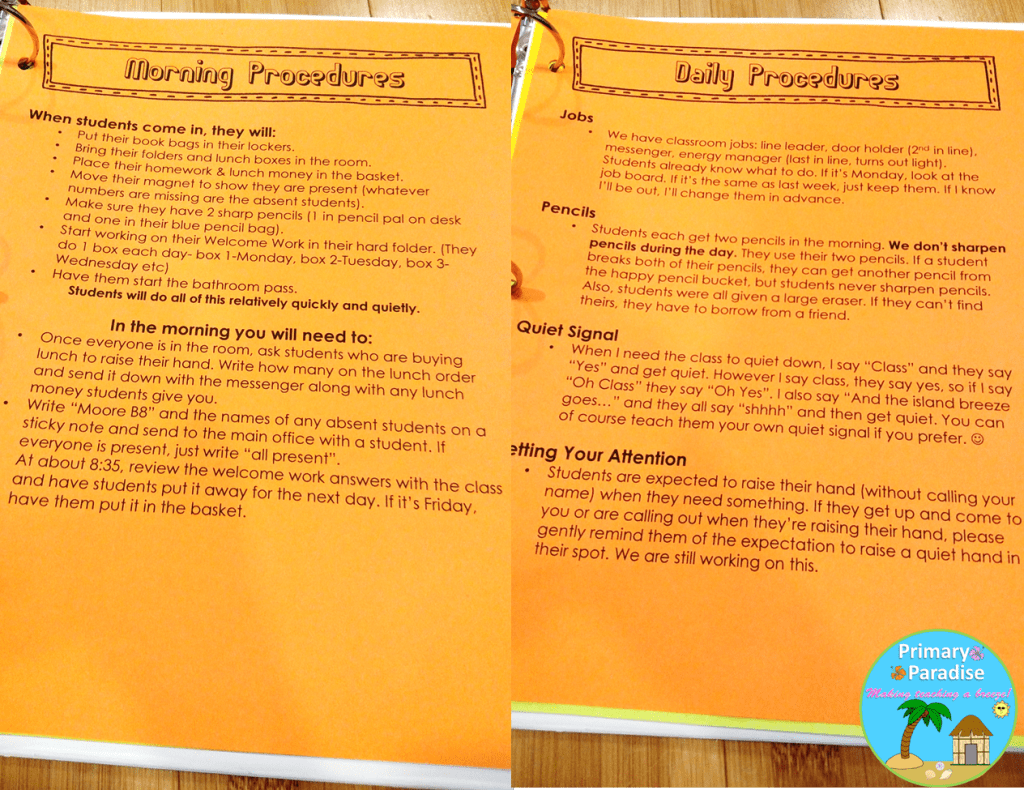
- Behavior management information– this makes life so much easier for the sub to have it spelled out.

- Daily Schedule & Specials Schedule
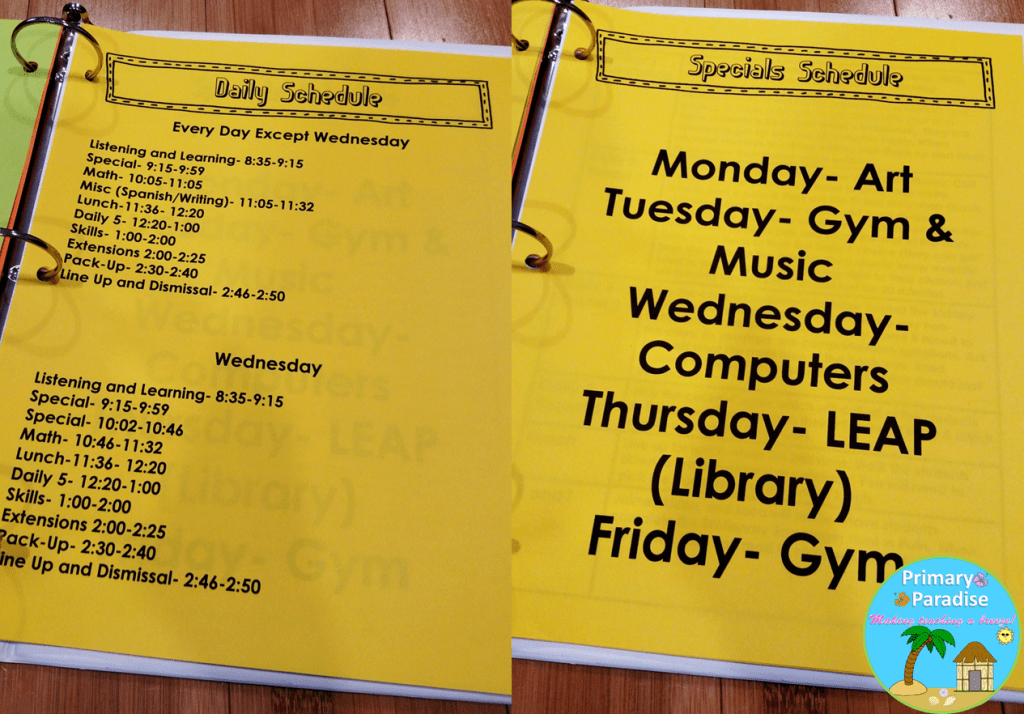
- Emergency Sub Plans (I’ll go into more detail below)
- Emergency procedure information- it never fails that there’s a fire drill when you have a sub, so make sure they know what to do.
That’s it! Putting all of that information in one place will save you a TON of time, and it will really help your sub out because they’ll know exactly how things work in your classroom.
#2. Have a consistent morning routine with procedures and morning work your students can do on their own.
When I was working as an in school sub, I often was thrown into a classroom as students were already arriving, which obviously could be a little chaotic. I often found myself quickly trying to read through sob plans and looking around the room for clue as to what these little kiddos (or sometimes big kiddos) were supposed to be doing. So, one thing in my own classroom that was incredibly helpful was my morning routine (which I also included in my sub binder).
My students knew that they were expected to come in quietly, hang up their things, move their clip to show me they were present, grab two pencils, and then sit down, take out their folder, and begin their morning work.
I was told many times by my substitutes that those first few minutes were so helpful to them because the students were so independent and it gave them a chance to get acclimated. My students always loved that, no matter what, they knew to take out their morning work, do the box for that day, and then they could read a book or do another early finisher activity. Since my morning was was consistent, it always made mornings either– whether I was there or not.
#3. Create plans using activities and skills that you’ll be reviewing all year.
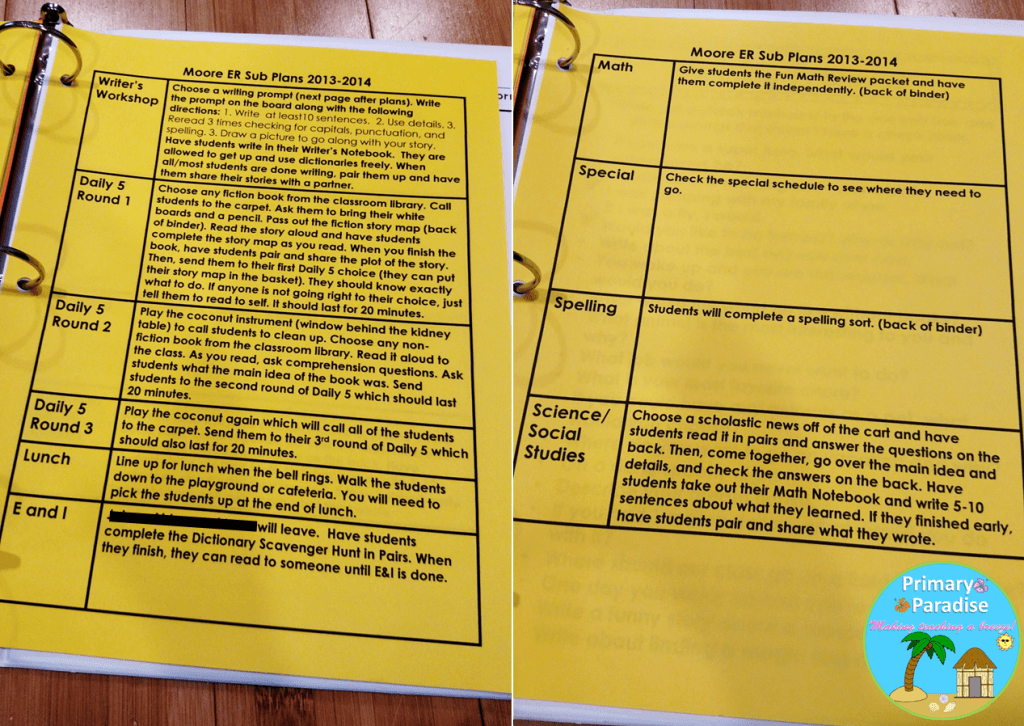
Let’s face it. When you have a substitute, they’re just not you. They’ll often take much longer or much shorter to complete tasks, and certain skills might not get the attention they need. This isn’t the fault of the substitute, it’s just the nature of our job and the personal touches we each add. So, my solution to this, and also a huge sanity saver, was to make very generic plans that someone could step in and complete at the drop of a hat.
Here are some examples:
Writing
For writing, I simply gave a list of writing prompts that the sub could pick from, had them review our classroom writing expectations, and then had students write in their writer’s workshop journal. When they finished, they got to share their story with a friend. Easy peasy for the sub and students can always, always use extra writing practice. I’d also include writing activities like these winter ones seasonally if the sub felt like going above and beyond as well.
(Click the picture to download the writing prompts from my newsletter subscribers‘ free resource library.)
My reading plans had my sub pick ANY fiction book from my classroom library. Students would use a printable to make a prediction before the story and then complete a story map after the story. Both printables from my story elements pack could be used over and over again as subs would pick different books.
Math
For my math sub plans, I would take those extra practice sheets that we didn’t get to throughout the year and staple them into packets. I’d pick skills that could be reviewed over and over- addition, subtraction, skip counting, etc- and I would pick the sheets that were fun and simple- add and color by number, just add dice sheets, and so on. And since they were the “fun” practice sheets, my students always loved it. Because all of my activities were from my Activities by the Standards packs, they were standards based as well.
Science & Social Studies
Lastly, my school was lucky enough to receive a subscription to Scholastic News. We would get 4 different magazines- in class sets, each month, and we never were able to get to all of them. So, I kept the sets we didn’t get to and when I had a a substitute, my students would read them in pairs, complete the activities, and then complete a journal about what they learned- easy peasy!
All in all, I found using these 3 tips to make sub planning so much easier and I found the days I was at home sick or with my children who were sick to be much smoother. I hope that implementing these brings success to your classroom.
Have a favorite sub tip? Share it below! And join me next Tuesday on my Facebook page to learn about some early finisher tips!
If you enjoyed this post, make sure to like, comment, and share!
You can join my FREE Facebook Club for k-2 teachers here!
AND BE SURE TO SIGN UP FOR MY NEWSLETTER FOR MORE TIPS, TRICKS, IDEAS AND FREEBIES!
